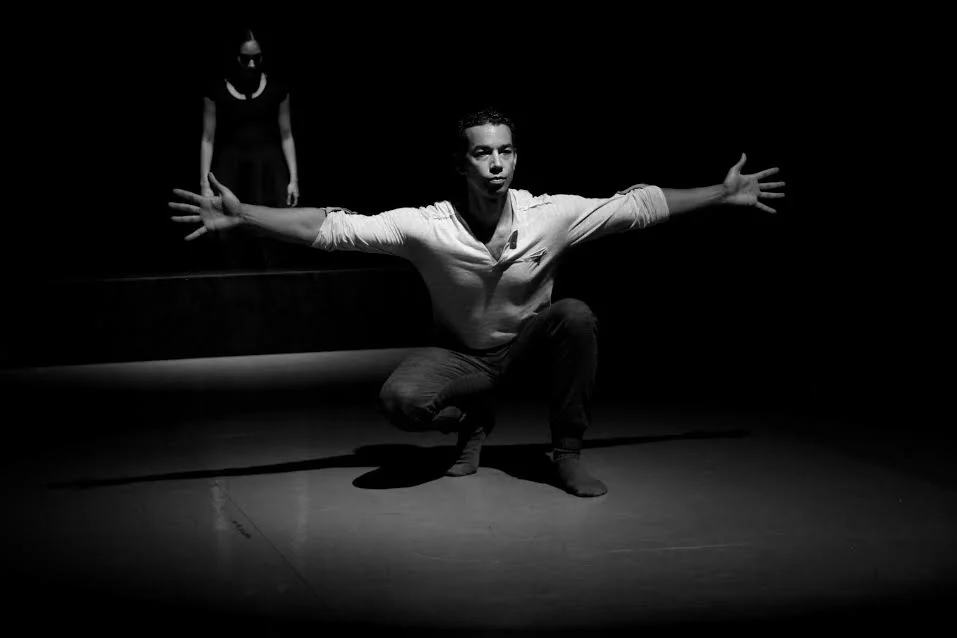How would you describe your creative process when you are composing a new piece of music?
I try to access an emotional archetype -- fear, exhilaration, longing, etc. -- and then, through a process of inward listening and improvisation at the keyboard, I compose a seed idea that corresponds to that archetype. To develop and complete the piece, I spin out the seed material according to my understanding of its musical properties. The music I spin out may in turn suggest some new and unforeseen dimension of my emotional archetype. Such revelations are exciting, and they keep the energy flowing: music informs archetype, archetype inspires music. Hopefully, at the end of the piece, the music has revealed a drama of emotions.
How does your process change when you are working collaboratively, specifically when you are working with a choreographer like Darion Smith?
The process is the same, but better, faster, and more fun. When collaborating, I still access an emotional archetype, but the immediacy of improvisation and interaction helps me bypass my inward searches -- which can be murky, repetitious, and draining -- and shoot from the hip. I see Darion make a move, and I'm instantly prompted to respond to the emotional and dramatic character it suggests to me. And as I develop the music, his ongoing activity is not merely another factor that I must balance in my attempt to create a coherent piece of art, but it is also a profound source of energy and inspiration.
What is the relationship between dance and music?
I don't have much insight on this question. I understand that music and dance are both time-based arts, and thus are, in my opinion, a more natural pairing than music and sculpture, for example.
Why are artistic collaborations like your recent collaboration with Darion important for artists like yourselves (do they challenge you creatively in new ways, to they help to bring new work to life more quickly, do you benefit from introducing each other to your audiences, etc.)?
As a composer, I'm desperate for that magic source of inspiration that will help me create meaningfully, quickly, and enjoyably. I often work with text or with theater because I relate to storytelling better than I relate to the demonstration of an abstract musical idea. And I often collaborate with dancers because their art form seems better able to communicate meaning than mine. Whenever I witness a dancer's gesture, I'm struck by a mysterious depth and intimacy. Dance seems to go the heart of the matter, always. Music is sometimes disembodied and inhuman (and therefore, in my perspective, bordering on meaningless). The composition of much of the 20th century's art music revealed astonishing mental expertise and an even more astonishing inability to connect to listeners. Why? I suspect that it was because some of that music wasn't firing on all cylinders. It was brilliant mentally, but deficient, perhaps, in the arenas of body and spirit. I hang around dancers to be a more embodied composer. That way I have a better chance of communicating meaning to my audience.
Do you believe that artistic collaborations are important for audiences, particularly young audiences? If so, why and how?
I also don't have much insight into this question, alas.
More about Composer Daniel Daly
He is a composer, but his primary interest is storytelling. To that end, he frequently includes other media – such as theatre and dance – in his compositions. At UO, he created music for Scorched, a play produced at Hope Theatre in winter 2016, and founded sonos domum, a new music ensemble dedicated to multidisciplinary collaboration, in 2014.
His specialty, however, is creating text for music. He recently completed the libretto of a new opera entitled The Banshee, whose music he is currently composing in preparation for a May, 2017 performance. His dramatic vocal compositions have been performed by acclaimed soprano Estelí Gomez in Portland, Oregon, and at the 2016 Oregon Bach Festival Composers Symposium in Eugene. Prior to his studies at UO, he published his own fantasy novel, When Waters Whisper, and served in a music position at the Oregon Shakespeare Festival, where he transcribed the score of the new musical, The Unfortunates, and created sound for a side-stage production of Caryl Churchill’s apocalyptic drama, Far Away. In 2012, he graduated summa cum laude from Willamette University, where he studied composition, creative writing, digital music production, and piano.




